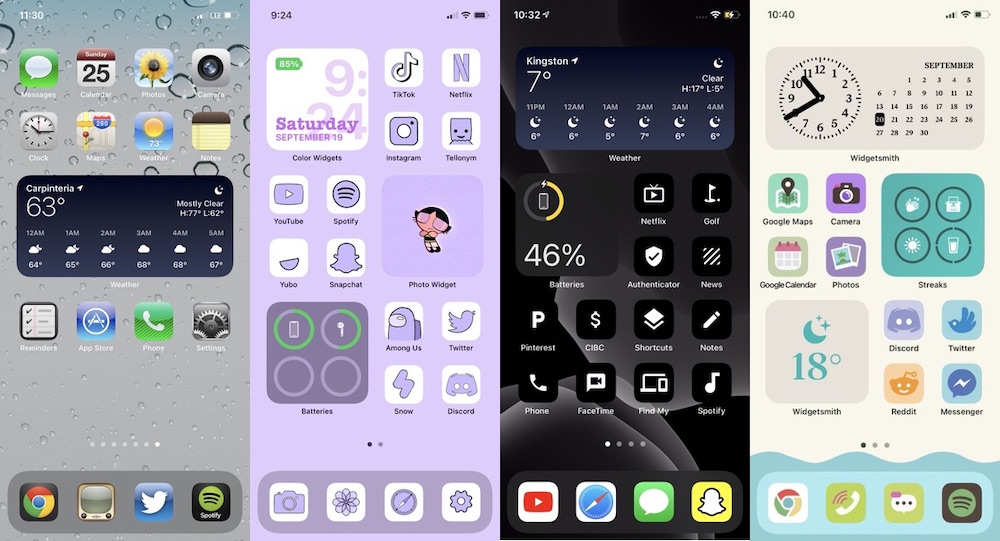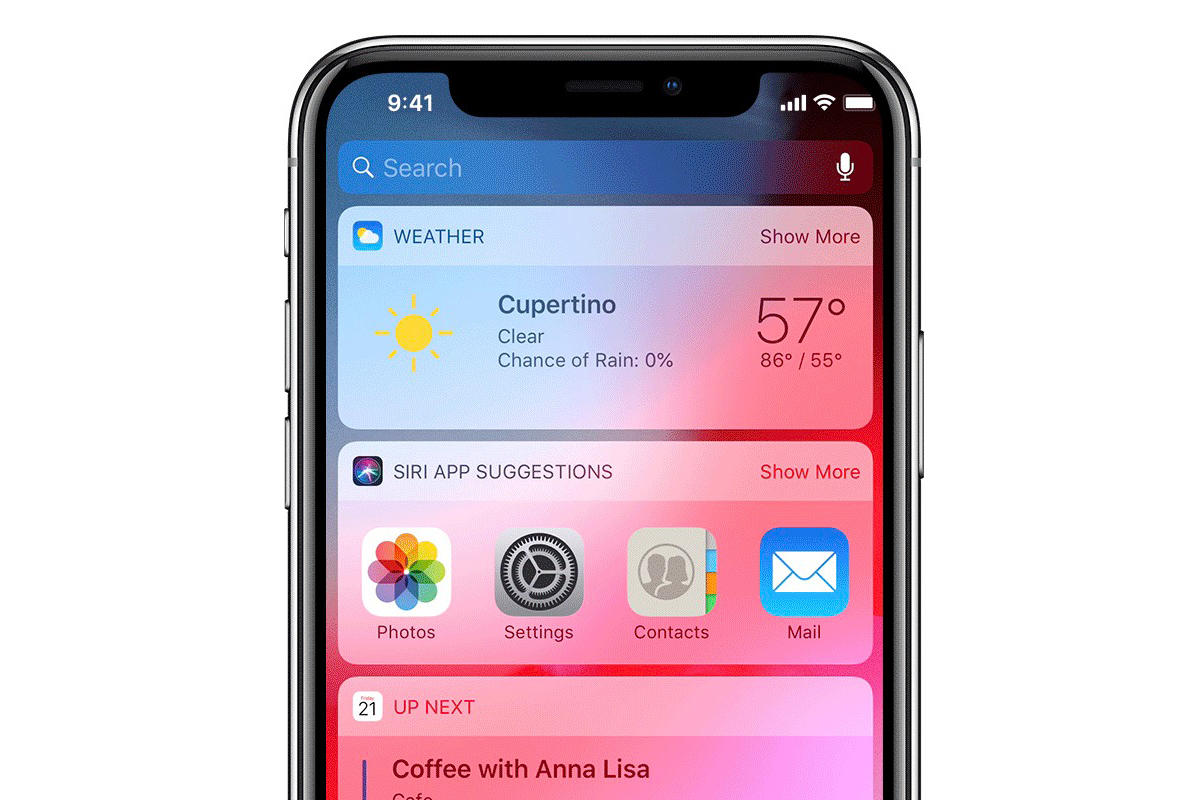New to iOS 14? Learn How to Master Widgets, Smart Stacks and More
 Credit: ms_pics_and_more / Shutterstock
Credit: ms_pics_and_more / Shutterstock
Toggle Dark Mode
One of the biggest changes that iOS 14 brought to the table was the introduction of widgets for the iPhone and iPad.
After years and years of asking for it, Apple finally implemented more customization features to the iPhone and iPad’s Home screen. Now it’s easier than ever to show your style and to organize your devices just the way you like them.
It’s true that Android has had widgets for a very long time, but if you’re a hardcore iPhone user, you’re probably still trying to figure out how to use widgets, how to customize them, and how to only feature the most important apps on your Home screen.
Don’t worry! You’re not the only one getting used to these new features. But if you want to learn how to master your Home screen and make it your own, all you need to do is follow these simple tips.
How to Start Using Widgets on Your iPhone
Let’s start with the most noticeable change of them all: widgets. If you’re not familiar with them, widgets are basically tiny applications that can show you the most important information you need, or help you access a quick action you want to make without opening the entire app.
There are a bunch of widgets available from the get-go, but of course, the best ones to try are Apple’s first-party widgets.
Here’s how you can add a new widget:
- Tap and hold on your Home screen until you enter jiggle mode.
- Tap the “+” icon on the top right corner of your screen.
- You’ll see a list of all your available widgets. Choose the one you want, or use the Search Widget at the top of your screen to search for the one you’re looking for.
- Once you selected a widget, you’ll have to choose its size. Pick the best size for you and tap on Add Widget.
- Your widget will go to the top left corner of your screen. You can choose to move it around or to delete it by pressing the “-” icon on top of it.
Keep adding all your favorite widgets and choose the right position for them. You can have as many widgets as you want, but keep in mind that, just like with Android devices, having too many widgets can affect your iPhone’s performance and battery in the long run. Fortunately, Apple thought of that and gave us Smart Stack.
Customize Smart Stacks
A Smart Stack is a collection of apps inside the same widget. It lets you see a list of all the widgets available by swiping up in it, or you can set it so it automatically rotates between these apps to show you what your iPhone thinks you want to see depending on the time of the day and what your iPhone and Siri have learned from you.
It’s a pretty neat feature that will help you see what’s important and will keep everything minimal on your Home screen.
You can add Smart Stack like any other widget, following the steps we showed you before. If you want to customize your Smart Stack, here’s how you do it:
- On your Home screen tap and hold the Smart Stack widget.
- Tap on Edit Stack. Or if you’re on jiggle mode, just tap the Smart Stack widget.
- You’ll see a list of all the widgets available on Smart Stack if you want. You can move them up or down by dragging the three lines on the right side of the widgets.
- If you want to Delete one just swipe the widgets to the left until you see the Delete option.
Deleting widgets from Smart Stack is pretty straightforward. But adding them back into the widget requires a bit more effort. Hopefully, Apple will change this in the future. In the meantime, here’s how you can add widgets to Smart Stack:
- Add the widget you want in Smart Stack to your Home screen. Make sure it’s the same size as your Smart Stack.
- Hold the widget and drag it to the Smart Stack widget.
- Your widget is now inside Smart Stack if you want to move it around, tap on the Smart Stack widget.
In the editing window, you can also see the option Smart Rotate toggled on. This feature uses your iPhone’s and Siri’s intelligence to rotate your widgets based on what your iPhone thinks you’ll want to see at that moment.
If you want to control your own Smart Stack, make sure to toggle off this feature.
Hide Unnecessary Pages on Your Home Screen
One thing that Android has had and Apple hadn’t added yet is an app library that’s separate from the Home screen to store all of your apps. That way, you can customize your Home screen without having to see every app you have installed.
With iOS 14, Apple decided to take a different approach. Instead of having a different place to have your apps, you can now hide pages on your Home screen.
With this feature, you can have only the most necessary apps and widgets on your Home screen. The rest of the apps are hidden on those pages, or you can find them on the new App Library as well. But more on this later.
Here’s how you can hide your pages on iPhone:
- Tap and hold your Home screen until you enter Jiggle mode.
- Tap on the Page indicator. It’s the small line with some dots inside it just above the Dock at the bottom of your screen.
- You should see all your pages with a small checkmark below them. Tap on the checkmark to show or to hide your pages from the Home screen.
Keep in mind that, even though you hid a page, the apps and widgets, and the order they’re in will never disappear. So if you have a change of heart, or you want to hide specific pages at certain times, you can do it and you won’t lose anything.
Clean Your Home Screen and Use the App Library
Another major change in iOS 14 was the introduction of the App Library. This feature contains all your installed apps, and it automatically organizes them by category in different folders.
Plus, you’ll have a Suggestions folder that shows the apps Siri thinks you’ll want to see or use at that moment. And if you have too many apps you can use the search option inside the App Library to quickly find it.
This feature helps you declutter your Home screen from apps you don’t regularly use, but you still need to have installed. It’s also a great way to have your apps neatly organized without having to create folders for yourself.
If you want to just remove apps from your Home screen without deleting them follow these steps:
- On your Home screen, tap and hold the app you want to remove.
- You’ll see the Quick actions menu. Tap on Remove App.
- Tap in Remove from Home screen.
Now, to access the app, or add it back to your Home screen, all you need to do is go to the App Library and drag the app back to the page you want it on.
Add Custom Shortcuts to the Home Screen
People have been taking advantage of the iPhone’s Shortcuts to create awesome and unique Home screens with custom “App icons”.
You can create a Shortcut on your iPhone and place it on your Home screen. You also have the option to customize it and add your own image to work as an icon for the Shortcut. And people are creating some really cool icons to use Shortcuts as your main apps. Here’s a list of free icons you can use.
Here’s how you can add your shortcuts to your Home screen:
- Go to the Shortcuts app.
- Go to All Shortcuts if you’re not there already.
- Tap on the shortcut’s options menu. That is, the three dots on the shortcut you want to add to your Home screen.
- Tap the i icon next to your shortcut.
- You should see the Scripting for your shortcut. Tap on the options menu on the top right corner of your screen. Just below Done.
- Tap on Add to Home screen.
- You can change the name and icon. You can use any image you have on your iPhone to use as an icon.
- Once you finish customizing it, tap on Add on the top right side of your screen.
When you go back to your Home screen, you should see your new, fully customizable icon with your Shortcut action. You can create as many as you want to do simple tasks like open your camera or start playing an Apple Music playlists.
Keep in mind though, that shortcuts don’t work the same as regular apps. For starters, every time you tap on a shortcut, it’ll first open the Shortcuts app and then do the action it usually does.
Also, if you replace your Mail app, for instance, you won’t see the number of messages or notifications you have on that application. This could be actually a good thing for people who’re constantly bothered by having too many pending notifications.
Finally, most apps on the Home screen have a Quick Actions menu, that pops up every time you tap and hold the app for a short time. If you’re used to using them, I have to tell you that you won’t find them after setting up custom icons.
Customize the Today View
Older iPhone users know that the iPhone did in fact had widgets before the iOS 14 software update. They just weren’t as good as the ones we have right now.
These widgets could only be placed in your Today View, which is the page you get when you swipe all the way to the left on your iPhone.
Despite adding widgets to the Home screen, the Today View feature still exists and still has the same widgets available. You might be wondering why you’d want to add widgets to Today View if you can have them on your Home screen.
And to that I tell you, you can’t have all of them. At least not right now. All first-party Apple widgets are available for both the Today View and the Home screen, but some third-party apps haven’t caught up to this new feature yet. And you can only have their widgets in the Today View.
That’ll probably change in the future, but for now, here’s how you can add widgets to the Today View:
- On your Home screen, swipe all the way to the left.
- Scroll down and tap Edit at the bottom of your screen.
- At the bottom of the list of widgets, tap on Customize.
- You’ll see a list of the widgets you can add to Today View. Tap on the “+” icon on the left side of the widget to add it.
If you want, you can also move your Home screen widgets to Today View by dragging and dropping them there.












